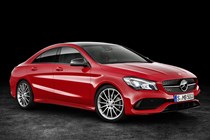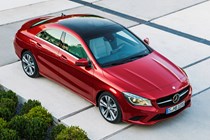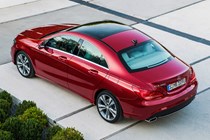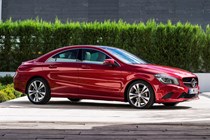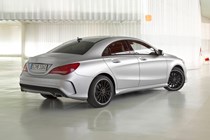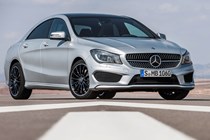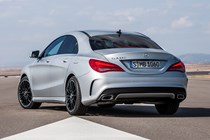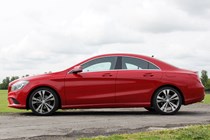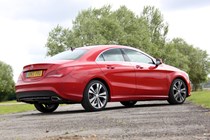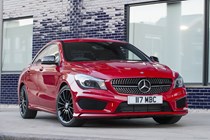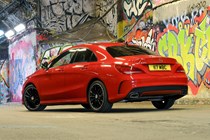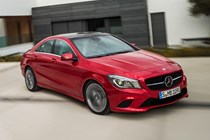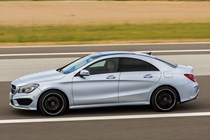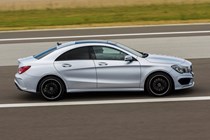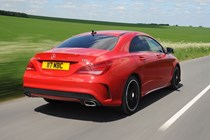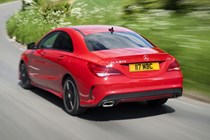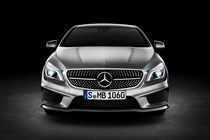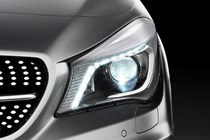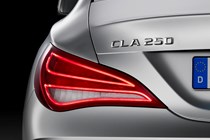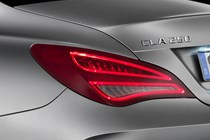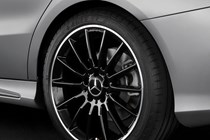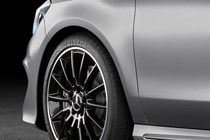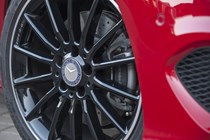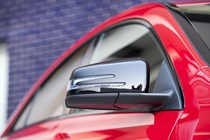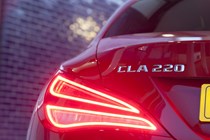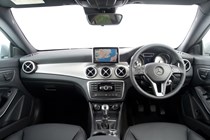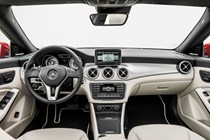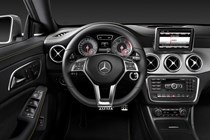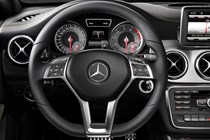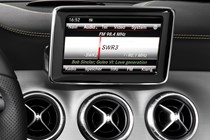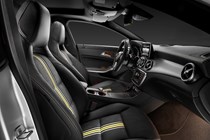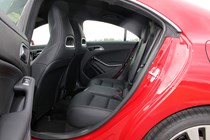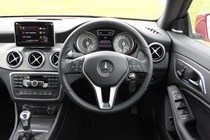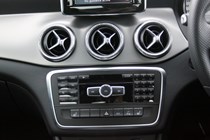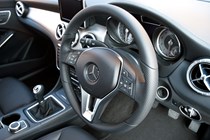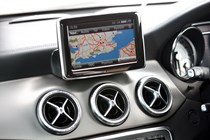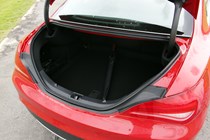
Mercedes-Benz CLA-Class Coupe (2013-2019) engines, drive and performance
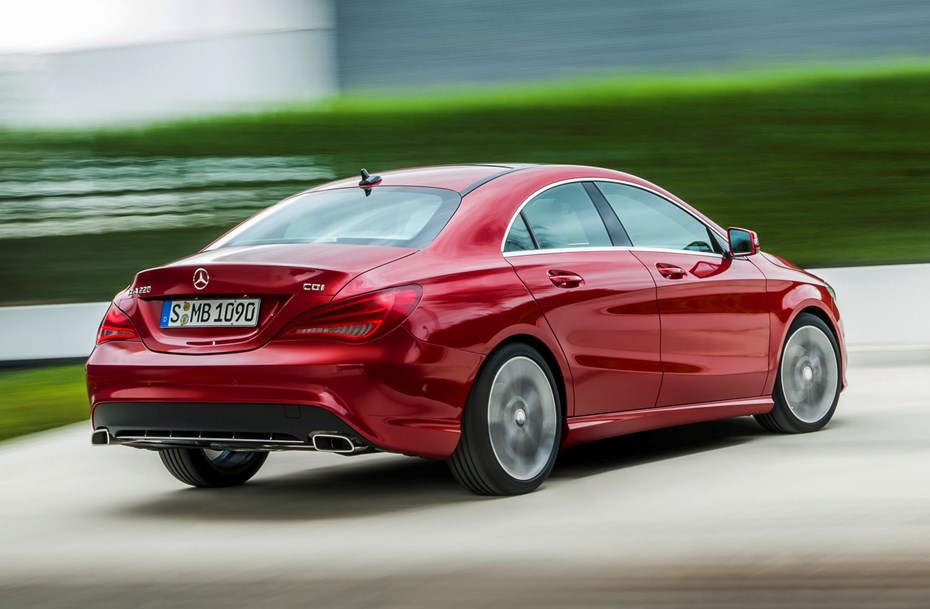
There’s a choice of two engines available – one diesel and one petrol.
Diesel option
The diesel is expected to account for the majority of sales in the UK. Known as the CLA 220 CDI, it’s a 2.1-litre turbocharged unit with 168bhp and 350Nm of pulling power. That’s enough for a sprint from rest to 62mph in 8.2 seconds and a top speed of 143mph.
This is an engine which pulls very well from almost any revs, with a healthy dose of torque making over-taking a simple task.
There is only one transmission available a seven-speed twin-clutch semi-automatic gearbox, and it must be said that’s a bit of a shame since it can be somewhat recalcitrant when you’re trying to operate it manually using the paddle-shifters behind the steering wheel.
There’s a button on the central console to switch the gearbox between Manual, Sport and Eco modes, the latter two dictating how long the car holds onto its gears for plus how quick the throttle response is.
Petrol option
The sole petrol offering is a 1.6-litre badged as the CLA 180. It has 120bhp and 200Nm, which translates to a 0-62mph time of 9.3 seconds and a top speed of 130mph. A six-speed manual gearbox is the only option for the petrol model.
There’s a choice of two suspension set-ups – comfort and sport – depending on the trim level you decide upon. The latter is 20mm lower at the front and 15mm lower at the rear to combat body-roll and improve agility through the corners.
Our choice would be the Comfort spec for UK roads. It’s far more compliant without losing too much in the way of body control, which makes the CLA a significantly nicer car to drive. The Sports set-up is fairly choppy at lower speeds and it didn’t seem to be much quicker along a twisty lane.
That said, the CLA feels very accomplished around bends regardless of your choice of chassis configuration. It’s very balanced and feels composed, agile and keen to turn into the corners.
All CLAs get Mercedes’ Direct Steer System, which the firm claims improves feedback through the wheel and is quicker to respond to the steering wheel when tackling the back roads. It tightens up considerably when driving at pace, helping the car feel agile and composed at the same time.


